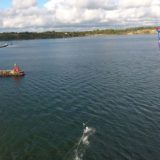Tour de France 4th Stage: A Test of Endurance and Strategy

Introduction:
The Tour de France is arguably the most prestigious cycling event in the world, attracting riders and fans from all corners of the globe. The 4th stage of this magnificent race holds a special place among the cycling community. Known for its breathtaking landscapes and challenging terrain, the Tour de France 4th stage is a true test of endurance and strategy. In this article, we will delve into the intricacies of this stage, providing essential information for cycling enthusiasts and shedding light on its historical evolution.
Understanding the Tour de France 4th stage:

The Tour de France 4th stage, also known as “Le Tour,” is a critical phase in the race. Stretching over a distance of approximately 200 kilometers, this stage showcases the riders’ ability to navigate treacherous routes, overcome obstacles, and maintain a steady pace. It typically takes place in the early days of the Tour, setting the tone for the challenges that lie ahead.
Historical Evolution of the Tour de France 4th stage:
Since its inception in 1903, the Tour de France has undergone several transformations, and the 4th stage has evolved alongside it. Over the years, it has witnessed significant changes in terms of the route, terrain, and competitive dynamics.
In the early years of the Tour, the 4th stage was relatively shorter, covering distances that ranged from 150 to 200 kilometers. However, it soon became evident that a more challenging route was necessary to push the riders to their limits. Consequently, organizers began introducing hilly and mountainous terrains, elevating the difficulty level of the 4th stage.
During the 1960s and 1970s, the Tour de France witnessed a paradigm shift, with an increased focus on mountain stages. This had a profound impact on the 4th stage as well, as it started incorporating formidable mountain passes such as the Col du Tourmalet and Mont Ventoux. These additions not only tested the riders’ physical prowess but also demanded strategic decision-making to conserve energy for the grueling stages that followed.
In recent years, the Tour de France 4th stage has gained prominence, both in terms of the challenges it presents and its impact on the overall race. It serves as a stepping stone for climbers to assert their dominance and gain valuable seconds on their rivals. The inclusion of iconic mountain passes, such as Alpe d’Huez and Col du Galibier, has made this stage a spectacle for fans, who flock in large numbers to witness the riders battling against nature’s formidable obstacles.
Bulletpoints highlighting key aspects of the Tour de France 4th stage:
– Distance: Approximately 200 kilometers
– Terrain: Varied, includes mountain passes and challenging ascents
– Historical Significance: Sets the tone for the subsequent stages, often deciding the fate of the race
– Popular Mountain Passes: Col du Tourmalet, Mont Ventoux, Alpe d’Huez, Col du Galibier
– Strategy: Requires a balance between aggression and conservative riding due to the demanding nature of the route
– Spectator Attraction: Draws fans from across the world to witness the exhilarating displays of athleticism and determination
Conclusion:
The Tour de France 4th stage, with its demanding terrain and strategic intricacies, is a pivotal moment in the world’s most renowned cycling race. Over time, it has evolved to become a true test of endurance and an opportunity for climbers to solidify their positions. As fans gather to cheer on their favorite riders, it’s a spectacle that embodies the spirit of competition and the triumph of human will. So, whether you are a casual fan or a devoted cycling enthusiast, the Tour de France 4th stage promises excitement, drama, and unforgettable sporting moments.

















